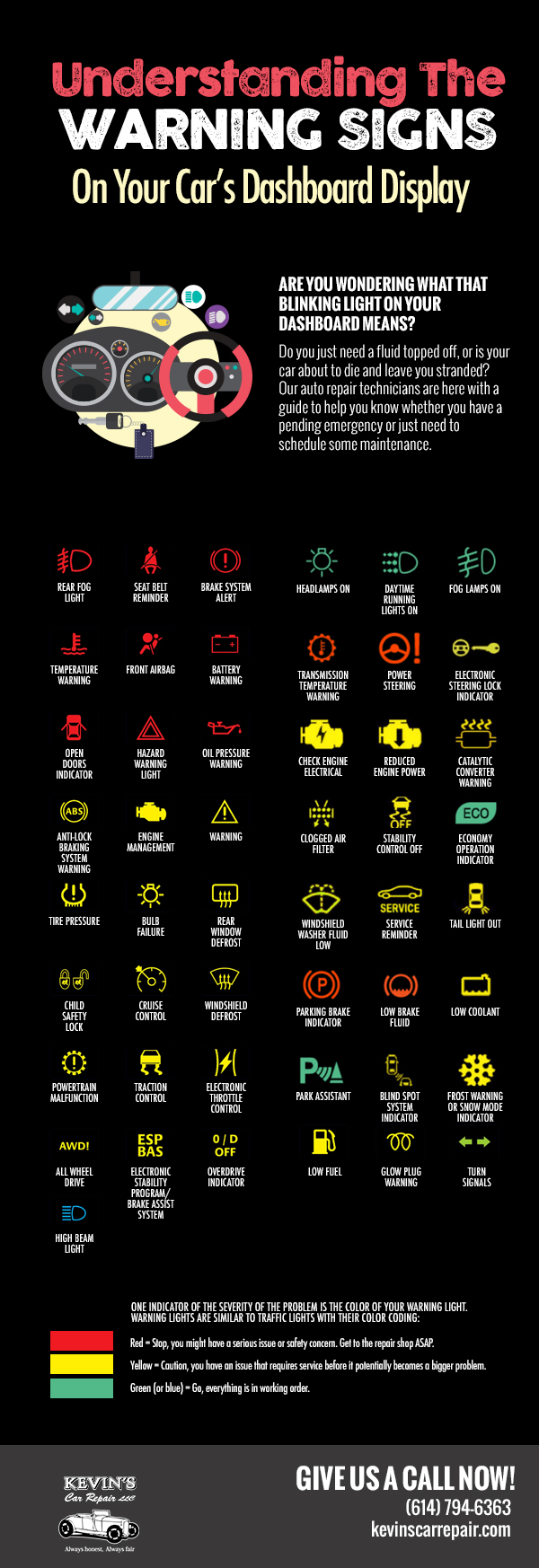Interpreting Your Car'S Alert Lighting: Their Real Effects
Interpreting Your Car'S Alert Lighting: Their Real Effects
Blog Article
Web Content Writer-Faulkner Dalgaard
When you're behind the wheel, those beautiful caution lights on your control panel can be a bit complicated. Do you recognize what they're trying to tell you about your automobile's health and wellness? Comprehending the significance of these lights is important for your safety and the durability of your car. So, the next time one of those lights pops up, wouldn't you wish to decode its message accurately and take the necessary steps to resolve it?
Common Warning Lighting and Interpretations
Determine common warning lights in your automobile and recognize their definitions to make sure risk-free driving.
The most regular caution lights consist of the check engine light, which indicates issues with the engine or emissions system. If this light begins, it's vital to have your vehicle examined quickly.
The oil stress advising light suggests low oil pressure, requiring immediate focus to prevent engine damage.
A flashing battery light may recommend a faulty billing system, potentially leaving you stranded if not attended to.
The tire pressure monitoring system (TPMS) light signals you to reduced tire stress, influencing car stability and fuel effectiveness. Ignoring this could cause hazardous driving problems.
The abdominal muscle light shows a problem with the anti-lock braking system, jeopardizing your capacity to stop quickly in emergencies.
Finally, the coolant temperature alerting light warns of engine overheating, which can lead to serious damage otherwise settled swiftly.
Comprehending check this link right here now will certainly aid you address problems quickly and maintain risk-free driving problems.
Value of Prompt Attention
Recognizing the usual caution lights in your vehicle is just the very first step; the value of without delay attending to these cautions can't be highlighted enough to ensure your safety and security when driving.
When a warning light illuminates on your control panel, it's your automobile's way of interacting a possible problem that requires focus. Overlooking these warnings can bring about more extreme problems later on, endangering your safety and security and potentially costing you extra out of commission.
Prompt interest to cautioning lights can stop malfunctions and accidents. As an example, a flashing check engine light can suggest a misfire that, if left neglected, can create damage to the catalytic converter. Resolving this quickly can conserve you from a pricey repair work.
In a similar way, a brake system warning light could signal low brake liquid or worn brake pads, critical elements for your security when driving.
Do It Yourself Troubleshooting Tips
If you observe a caution light on your dashboard, there are a couple of do it yourself troubleshooting pointers you can attempt prior to looking for professional assistance.
The first step is to consult your automobile's manual to comprehend what the details warning light suggests. Occasionally the concern can be as simple as a loosened gas cap activating the check engine light. Tightening the gas cap might resolve the problem.
An additional common problem is a reduced battery, which can cause numerous cautioning lights. Inspecting the battery connections for deterioration and guaranteeing they're safe could deal with the trouble.
If a caution light lingers, you can attempt resetting it by separating the car's battery for a few mins and then reconnecting it. Additionally, checking your automobile's fluid degrees, such as oil, coolant, and brake fluid, can assist troubleshoot warning lights associated with these systems.
https://oil-change-near-me95172.webbuzzfeed.com/32655188/how-mobile-vehicle-explaining-solutions-can-conserve-you-time-and-money
To conclude, recognizing your car's warning lights is essential for keeping your lorry running efficiently and safely. By without delay attending to these alerts and knowing what they indicate, you can avoid costly repairs and prospective breakdowns.
Bear in mind to consult your auto's guidebook for particular information on each alerting light and act appropriately to guarantee a trouble-free driving experience.
Keep educated, stay safe when traveling!
